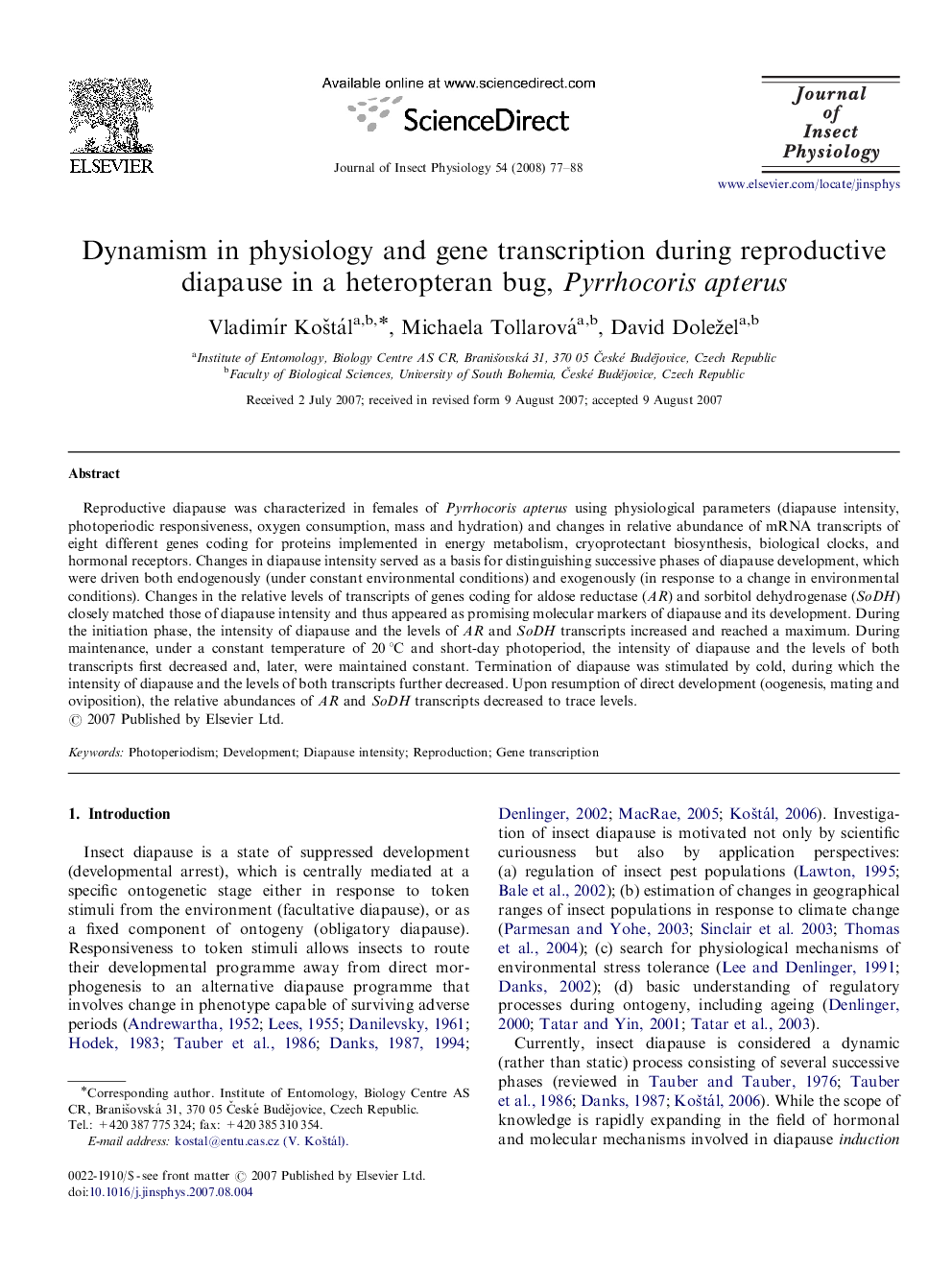| Article ID | Journal | Published Year | Pages | File Type |
|---|---|---|---|---|
| 2841418 | Journal of Insect Physiology | 2008 | 12 Pages |
Reproductive diapause was characterized in females of Pyrrhocoris apterus using physiological parameters (diapause intensity, photoperiodic responsiveness, oxygen consumption, mass and hydration) and changes in relative abundance of mRNA transcripts of eight different genes coding for proteins implemented in energy metabolism, cryoprotectant biosynthesis, biological clocks, and hormonal receptors. Changes in diapause intensity served as a basis for distinguishing successive phases of diapause development, which were driven both endogenously (under constant environmental conditions) and exogenously (in response to a change in environmental conditions). Changes in the relative levels of transcripts of genes coding for aldose reductase (AR) and sorbitol dehydrogenase (SoDH) closely matched those of diapause intensity and thus appeared as promising molecular markers of diapause and its development. During the initiation phase, the intensity of diapause and the levels of AR and SoDH transcripts increased and reached a maximum. During maintenance, under a constant temperature of 20 °C and short-day photoperiod, the intensity of diapause and the levels of both transcripts first decreased and, later, were maintained constant. Termination of diapause was stimulated by cold, during which the intensity of diapause and the levels of both transcripts further decreased. Upon resumption of direct development (oogenesis, mating and oviposition), the relative abundances of AR and SoDH transcripts decreased to trace levels.
